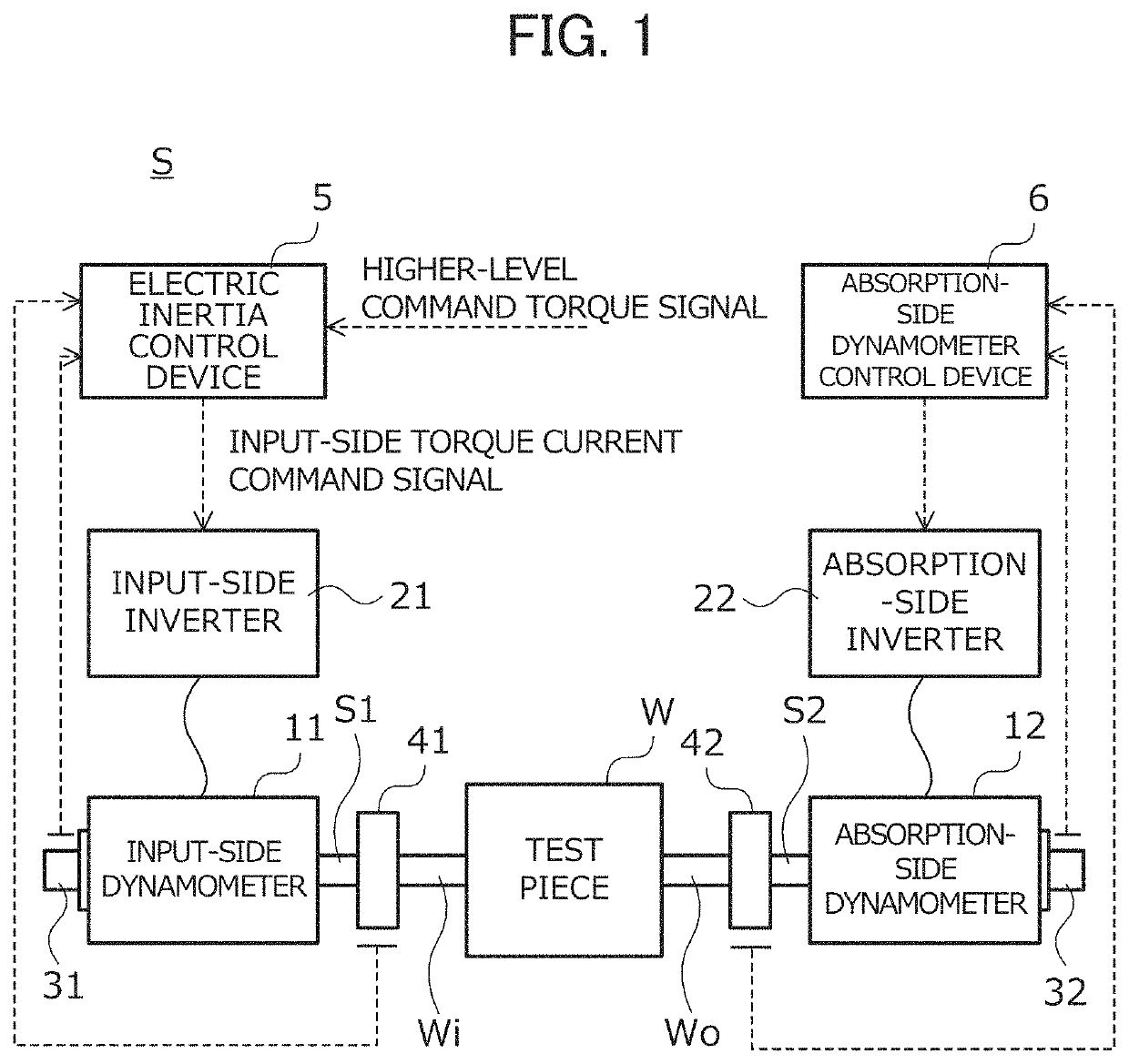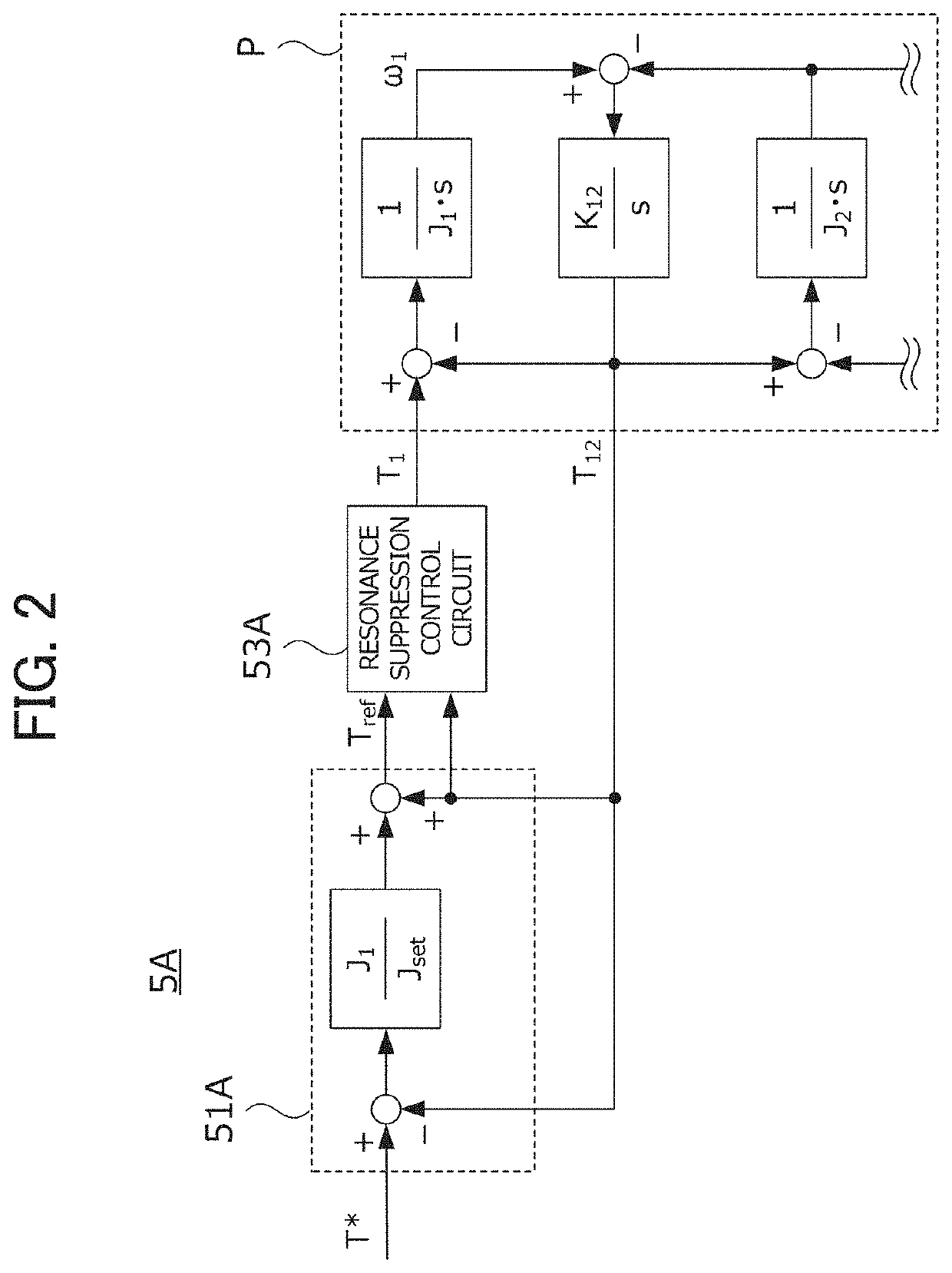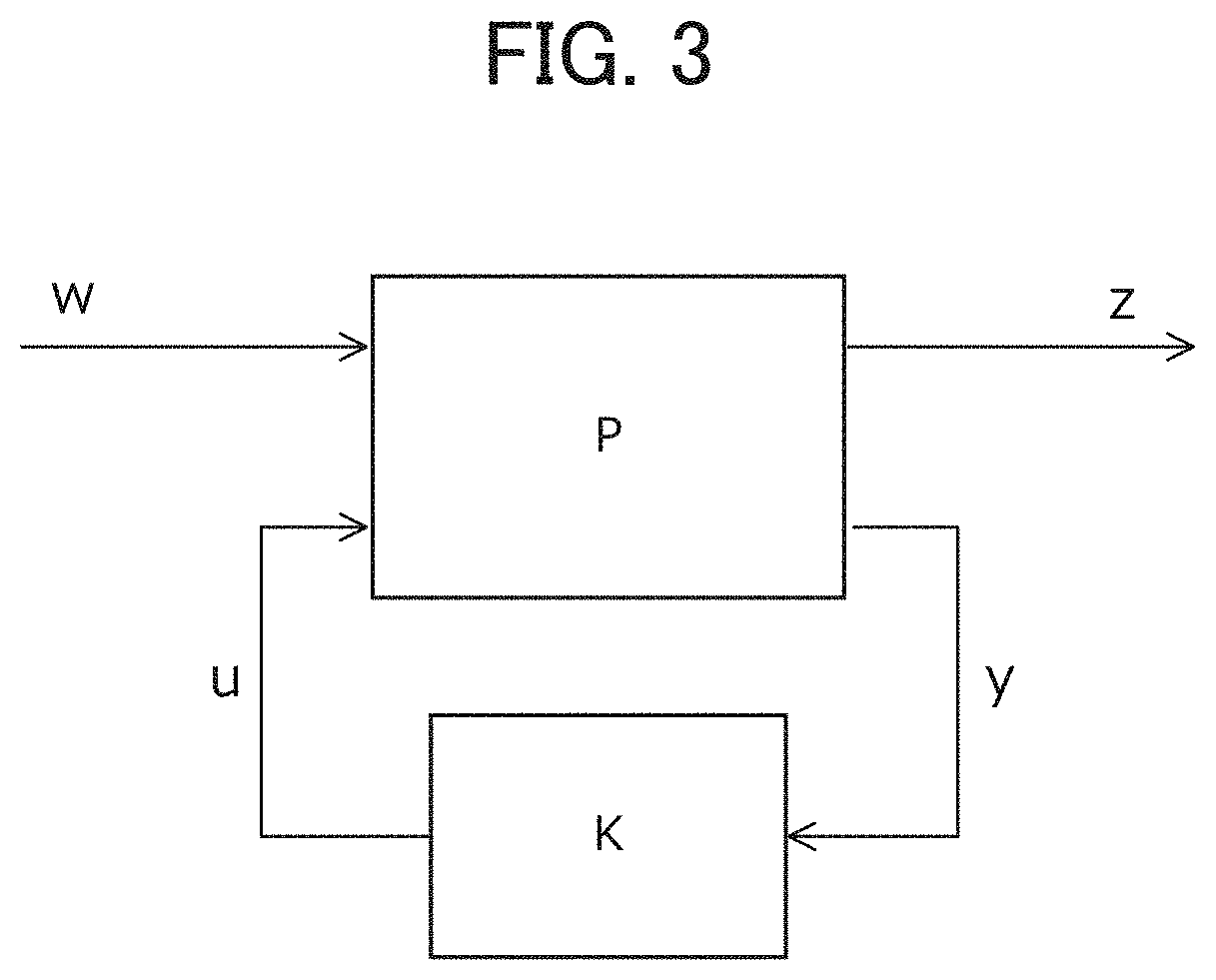Dynamometer system
a dynamometer and system technology, applied in the direction of instruments, mechanical equipment, structural/machine measurement, etc., can solve the problem of limited control bandwidth, suppress the resonance of mechanical systems, and achieve high accuracy the effect of simulation, prolonging the control request, and suppressing mechanical system resonan
- Summary
- Abstract
- Description
- Claims
- Application Information
AI Technical Summary
Benefits of technology
Problems solved by technology
Method used
Image
Examples
example 1
[0046]FIG. 2 is a diagram showing the configuration of a control circuit in the electric inertia control device 5A of example 1. In the electric inertia control device 5A, as described with reference to FIG. 1, a dynamometer system formed by coupling the input shaft of a test piece and an input-side dynamometer through an input-side coupling shaft and coupling the output shaft of the test piece and an absorption-side dynamometer through an absorption-side coupling shaft is a control target P.
[0047]In the following description, a Laplace operator is represented by “s”, a moment of inertia [kgm2] of the input-side dynamometer is represented by “J1”, a moment of inertia [kgm2] of the test piece is represented by “J2” and the shaft rigidity [Nm / rad] of the input-side coupling shaft is represented by “K12”. Among these parameters, at least a specific value of the moment of inertia J1 is assumed to be known.
[0048]Moreover, in the following description, a higher-level command torque signal...
example 2
[0058]The electric inertia control device 5B of example 2 will then be described with reference to FIG. 6. In the following description, the same configurations as those of the electric inertia control device 5A in example 1 are identified with the same reference numerals, and the detailed description thereof will be omitted.
[0059]FIG. 6 is a diagram showing the configuration of a control circuit in the electric inertia control device 5B of example 2. The electric inertia control device 5B includes: an inertia compensator 51B which generates, based on the higher-level command torque signal T* and the input-side shaft torque detection signal T12, the inertia compensation torque signal Tref that simulates the inertial body having the predetermined set moment of inertia Jset; the resonance suppression control circuit 53A; and a disturbance observer 57B which uses a difference between an estimation signal obtained by using the inertia compensator 51B and a detection signal obtained by u...
example 3
[0066]The electric inertia control device 5C of example 3 will then be described with reference to FIG. 9. In the following description, the same configurations as those of the electric inertia control device 5A in example 1 are identified with the same reference numerals, and the detailed description thereof will be omitted.
[0067]FIG. 9 is a diagram showing the configuration of a control circuit in the electric inertia control device 5C of example 3. The electric inertia control device 5C includes: an inertia compensator 51C which generates, based on the higher-level command torque signal T* and the input-side shaft torque detection signal T12, the inertia compensation torque signal Tref that simulates the inertial body having the predetermined set moment of inertia Jset; the resonance suppression control circuit 53A; and a disturbance observer 57C which uses a difference between an estimation signal obtained by using the inertia compensator 51C and a detection signal obtained by u...
PUM
| Property | Measurement | Unit |
|---|---|---|
| torque | aaaaa | aaaaa |
| angular speed detection | aaaaa | aaaaa |
| speed | aaaaa | aaaaa |
Abstract
Description
Claims
Application Information
 Login to View More
Login to View More - R&D
- Intellectual Property
- Life Sciences
- Materials
- Tech Scout
- Unparalleled Data Quality
- Higher Quality Content
- 60% Fewer Hallucinations
Browse by: Latest US Patents, China's latest patents, Technical Efficacy Thesaurus, Application Domain, Technology Topic, Popular Technical Reports.
© 2025 PatSnap. All rights reserved.Legal|Privacy policy|Modern Slavery Act Transparency Statement|Sitemap|About US| Contact US: help@patsnap.com



